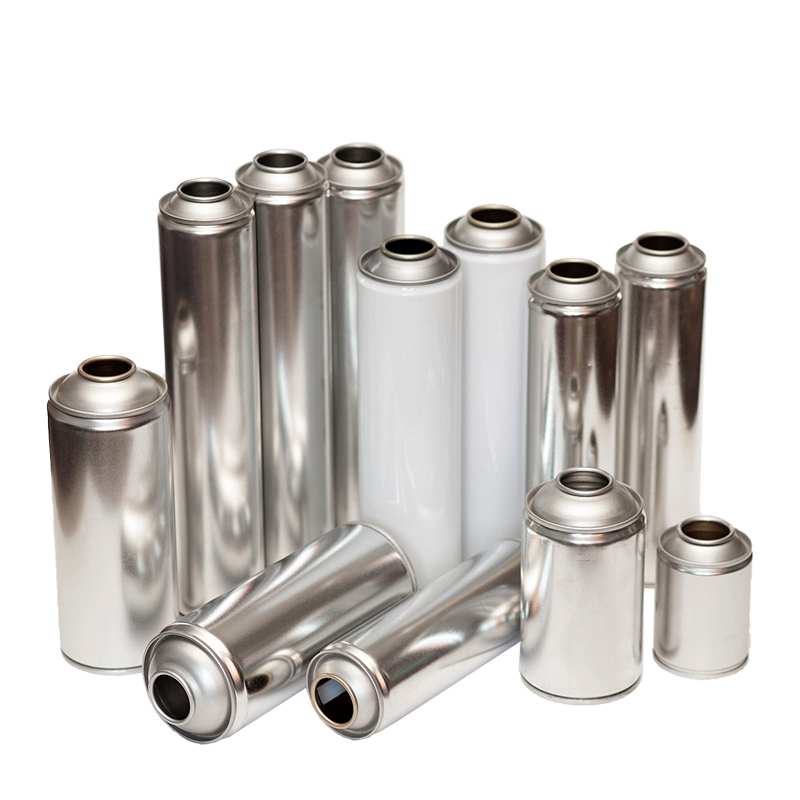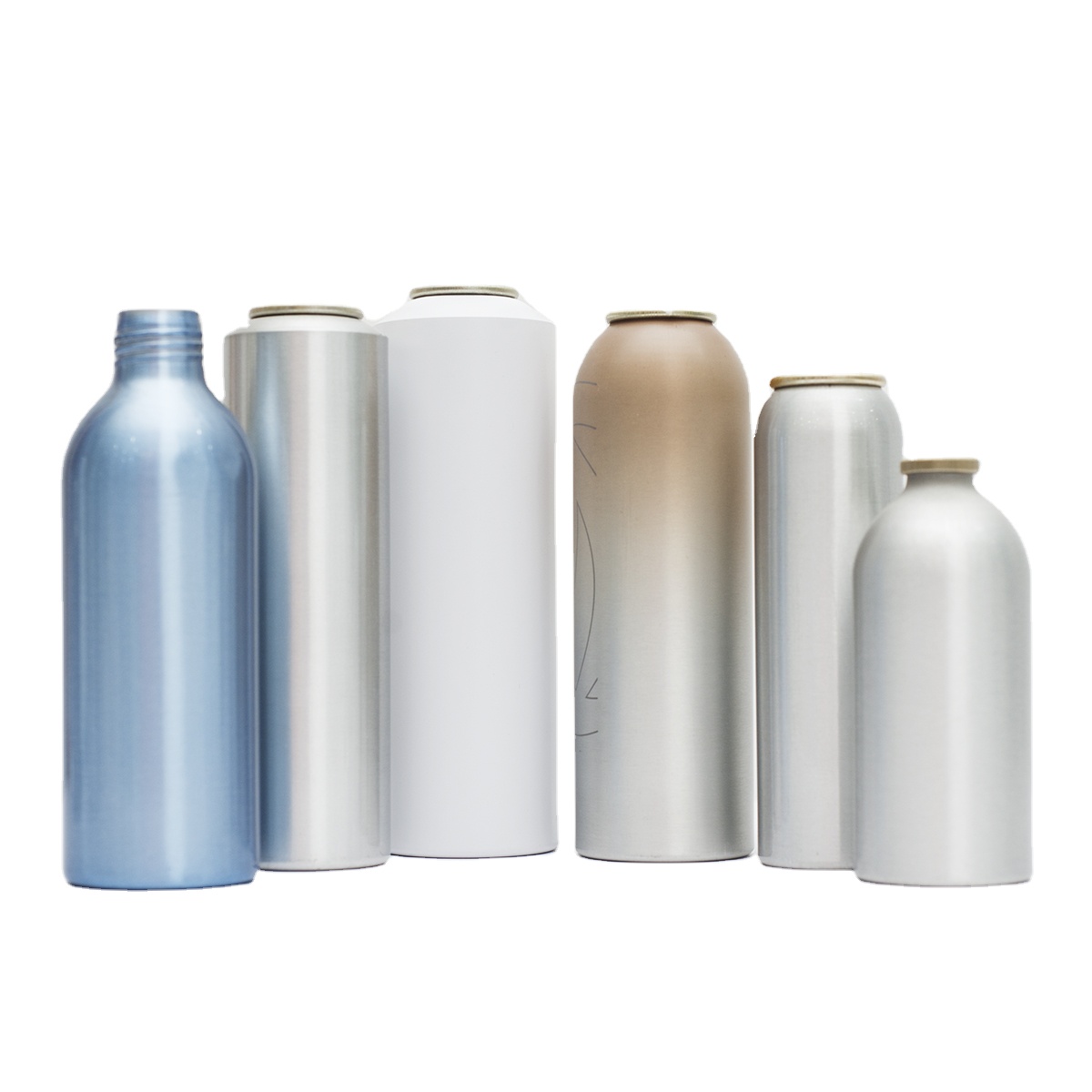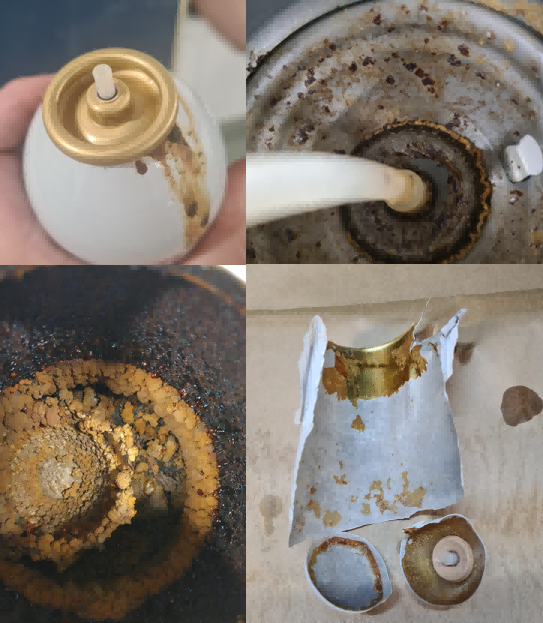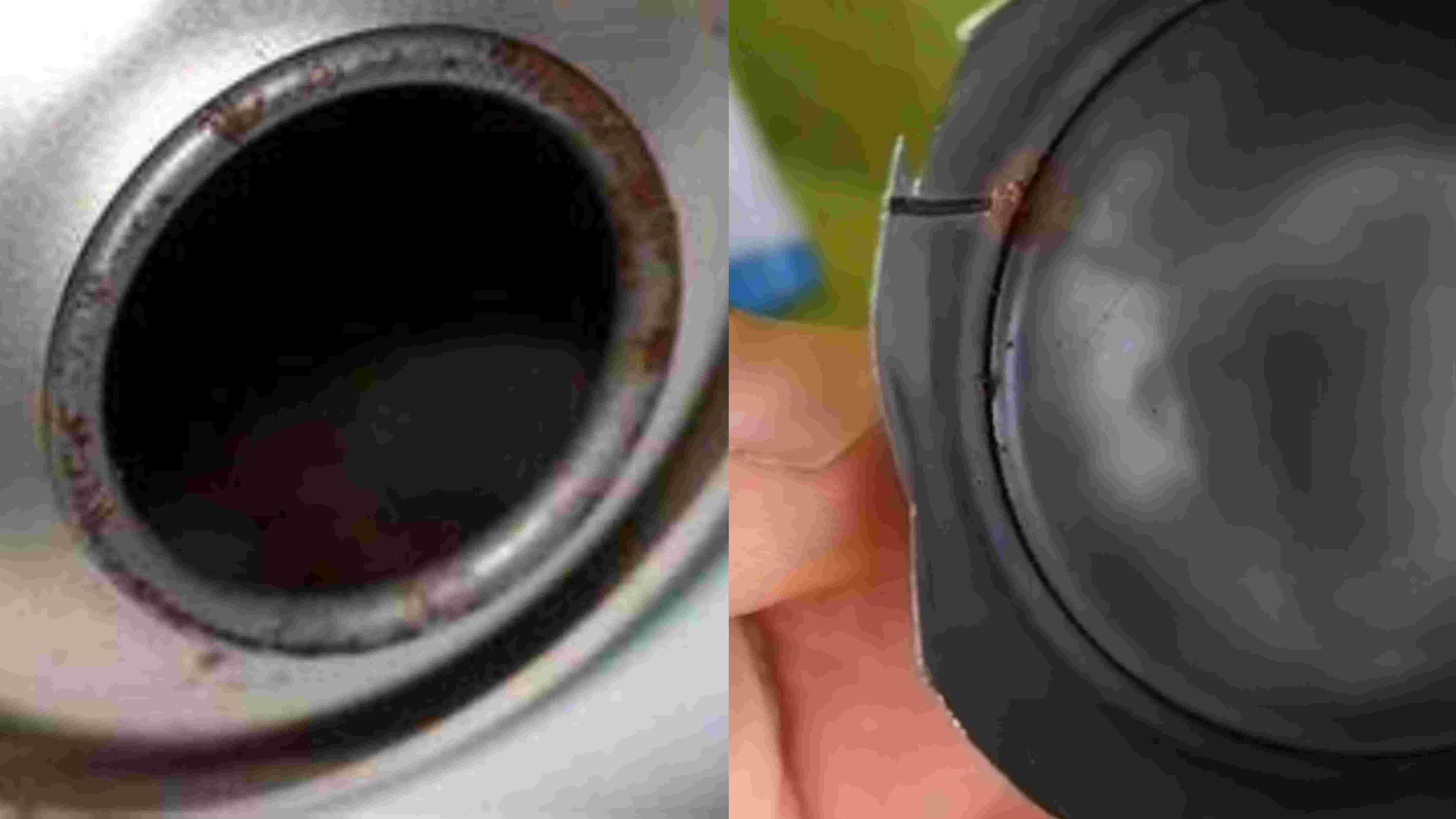Abstract
This blog will put forward some suggestions on how to prevent corrosion of aerosol products from the aspects of formulation and production process through specific cases.
About Aerosol products
Aerosol products are divided into aerosol tinplate cans, aerosol aluminum cans and plastic cans according to packaging, of which tinplate cans are the most widely used, and the phenomenon of corrosion in the cans is also the most common. Aluminum cans are different from tinplate cans because of the inert alumina layer and the protection of the inner coating, although corrosion in the tank also occurs, but relatively less.
 |
 |
| Tinplate can | Aluminum can |
Tinplate is a layer of high purity tin electroplating on a cold-tied thin steel plate, and the appropriate surface purification and oil treatment, in use to protect the steel base.
 |
Aluminum can corrosion |
| Tinplate can corrosion |  |
The aerosol tinplate can is mainly composed of three cans, which are composed of top cover, bottom cover and tank body. The two pieces of tinplate can is relatively small, composed of the top cover and two pieces of the stamped can body, which is dedicated to some high-pressure products. Aluminum cans are made of one piece of aluminum embryo, which has no seams compared with three or two tinplate cans, and the probability of corrosion of aluminum cans is small.
Types of corrosion
1. Uniform corrosion
For example, the alkaline cleaner and the tin layer inside the tinplate can without inner coating contact is completely detinned after termination.
2. Pit corrosion and perforation
Partial dissolution of metal leads to perforation.
3. Crack corrosion
The joint between the top and the bottom cover and the tank body is easy to form a retention area, and the electrolyte concentration of the contents is easy to cause gap corrosion.
4. Galvanic corrosion
At the brazing weld of the tank body, due to the destruction of the tinplate layer, there is a electrode potential difference between copper and iron, and in the presence of electrolyte, contact produces galvanic corrosion. Although the weld has a protective coating, the electrolyte can reach the surface of the metal layer through the protective layer, forming a corrosion battery, resulting in corrosion.
5. Stress corrosion
The stress of the forming deformation increases the distortion, causing corrosion at the crack, such as in aluminum cans.
6. Submembrane corrosion
Horizontal spread of corrosion on a metal surface under an organic film or a surface treatment film. Formulators do not pay much attention to the above classification when doing the stability test of the product, generally according to the vapor phase corrosion, liquid phase corrosion, gas-liquid interface corrosion to describe, and according to these three phenomena to select the appropriate corrosion inhibitor, adjust the formula.
How to prevent corrosion of aerosol products
The following will explain the formulation design to prevent corrosion of aerosol products
1. Tinplate can oil based (solvent) aerosol products
Generally, pure solvent-based formulations do not need to add corrosion inhibitors, and corrosion rarely occurs, but there are exceptions, case 1: oil-based LPG insecticide batch leakage tank. The reason for the analysis is that kerosene or LPG raw materials are mixed with a trace amount of water, and after filling into the product, the water makes some insecticidal effective ingredients hydrolyze or react with the kerosene impurity, precipitating acidic substances, resulting in corrosion through the tank.
Solution:
① Measure the moisture content of raw materials to ensure that the water content is less than 100ppm.
② Add some water-soluble solvents, such as isopropyl alcohol, ethanol and other dispersed oily solvents and trace water in LPG to prevent aggregation and settlement at the bottom.
2. Tinplate canned alcohol based aerosol products
Early air freshener formulations were mainly composed of flavors, anhydrous ethanol or isopropyl alcohol, LPG or DME. In general. This type of product does not need to add corrosion inhibitor, if using 95% ethanol, you can add 0.1% sodium benzoate.
| Physical Properties | DME | LPG |
| Specific Gravity (60/60°F) | 0.74 | 0.56 |
| Gas Density (kg/m³) | 2.11 | 2.18 |
| Gas viscosity(m²/s) | 1.238 x 10¯6 | 4.498 x 10¯6 |
| Gas Composition (%mol) | DME=99.96 | C3=56.1; C4=43.9 |
| Vapor Pressure @100°F(psig) | 110 | 112 |
| Low Heating Value (MJ/kg) | 28.4 | 50.0 |
--Comparison of DME and LPG--
Case:
A long-term production of alcohol-based air freshener appeared in batch can leakage, and finally the formulator found that the purchasing department changed the flavor manufacturer. The composition of the essence is very complex: aldehyde, alcohol, ether, olefin, etc., and the amount of air freshener flavor is several times or dozens of times higher than that of conventional products, so for such products, after passing the stability test, the production should ensure that the essence is not easily replaced.
Hairspray is another typical alcohol-based product, consisting of a setting resin (which must be neutralized with a base), ethanol, LPG, or DME. Generally, the neutralization degree of imported glue is high, PH≥7, and the corrosion of empty tanks is less. The PH of domestic glue is generally between 5-7, and if there is a small amount of acid residue in the synthesis process, the LPG formula will cause corrosion of the tin can without inner coating, and the DME formula will reduce the corrosion.
3. Tinplate canned water-based aerosol products
—For tinplate cans without inner coating, the PH of general water-based products is best controlled in 7.0~9.0, according to the functional requirements of the product, choose to add 0.1-0.2% vapor phase and liquid phase corrosion inhibitors, such as sodium benzoate, sodium nitrite, triethanolamine, ammonia, dihydroamine phosphate, morpholine, etc. The use and dosage of sodium nitrite should be carefully selected, if there are raw materials in the formula ingredients to oxidize sodium nitrite to sodium nitrate, it may have the opposite effect.
—For tinplate cans with inner coating, the PH of the product should be controlled above 5.5, but DME should not be used as a spraying agent, because DME will dissolve the inner coating and make it peel, which will not play a protective role, and the peeling inner coating may block the straw, resulting in the product can not spray.
When the PH of water-based products is > 10 or even PH of 12 or above, the strong alkali will dissolve the tin layer inside the tinplate can without inner coating, and the tank will show a gray and black, we call it "passivation layer", this phenomenon is called "detinning", when the tin is dissolved, the dark gray film of tin-iron alloy FeSn2 is exposed, and the iron passivation becomes black after further reaction with the strong alkali. Prevent further corrosion. In the presence of a passivation layer, the product will rarely corrode through the tank.
Compared with other water-based products, water-based LPG air fresheners should be noted, because the amount of essence is high, in the presence of water, emulsifier and a small amount of solvent, and LPG form an uneven phase system, shaking will form a short stable state when used, but the tank is stratified when standing, the upper gas phase, the lower liquid phase, and the lower liquid phase. In the middle is the emulsifier and water, essence (oil) formed emulsifier, formula and production, to take into account the gas phase, liquid phase and the middle layer of anti-corrosion, if the user does not shake the use, sometimes will spray a water column like a straight line. It has been pointed out that sodium nitrite should not be used as far as possible for water-based cavitation corrosion inhibitors, because some flavors with high ester content will react with them to cause discoloration of the feed liquid.
Water-based DME air freshener is a good choice, because water, the right amount of ethanol and DME will form a stable homogeneous system, no emulsifier, the essence can also be evenly dispersed in this stable system, the user whether shaken or not, can spray a continuous stable fog, and the corrosion inhibitor can also be well evenly dispersed in the content.
4. Aluminum canned aerosol
Aluminum is a kind of amphoteric metal, and acid and base will react, all aluminum cans have internal coating, conventional epoxy phenolic resin internal coating, special polyimide internal coating, by choosing the appropriate internal coating, the PH of the product is controlled within 3~11, under normal circumstances, aluminum cans can withstand.
5. Formulators should choose non-corrosive raw materials
Whether it is aluminum can aerosol or tinplate can aerosol, whether the tank has internal coating or not. Once there is chloride ion in the feed liquid, it will become the culprit leading to the perforation of the tank, so we should avoid the composition of chloride ion when selecting raw materials, and try to avoid the reaction between raw materials to generate chloride ion.
About valves
Empty tank anti-corrosion is very important, the valve can not be ignored, aluminum cans with aluminum valves, iron cans with iron valves is the most basic choice, of course, after the test, aluminum valves can also be matched with iron cans. In any case, in the stability test, the detection of the valve is just as important.
——This blog content source: "Packaging home PKGFamily"